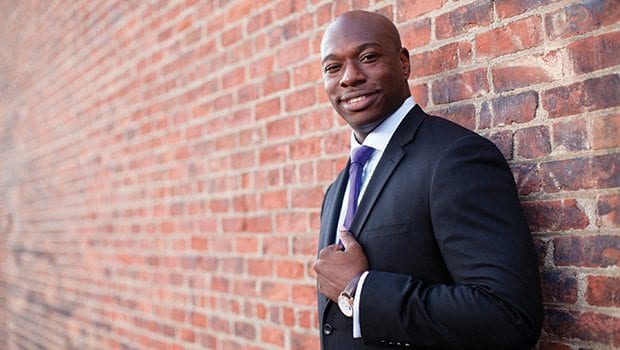
Hakeem Rahim, 34, was a studious little kid. He would sit quietly in class, his shirt buttoned up and glasses perched on his nose. “You look like someone you’d take your taxes to” was a comment once made about him. That little kid grew up to be a 6-foot-one-inch 200-pound wrestler and soccer player in his high school in New York. He had aspirations of being a doctor.
He was on his way as a pre-med student at Harvard University when his life suddenly took an unexpected turn. At the age of 17 he had his first panic attack. He attributed it to stress from being away from home in a new environment. He retreated to his dorm and the safety of his bed in a darkened room. “I thought I was sick,” he explained. After about an hour he felt better.
Major types of bipolar disorder
Bipolar I Disorder — defined by at least one episode of mania. The mania may require hospitalization or trigger a psychosis, which is a break from reality.
Bipolar II Disorder — defined by a pattern of depression and hypomania, but not mania.
Cyclothymic Disorder, or Cyclothymia — a mild form of bipolar disorder. Characterized by episodes of hypomania as well as mild depression for at least two years.
Rahim said he had mood swings during his freshman year but explained them away. “I didn’t think it was out of the norm,” he said. “College does that.” At the end of his freshman year he had his first episode of mania. Rahim explained he felt overly confident and certain. He talked … a lot.
When he returned home to New York, his feeling of empowerment grew. He was convinced that he had insights to the universe. He walked up and down the streets imparting wisdom — so he thought — to total strangers. This manic phase lasted for one to two weeks. His parents thought he was stressed and sent him to stay with relatives in Grenada to unwind. After about five days he plummeted into depression.
He fared better his sophomore year, but still experienced highs and lows and social anxiety. He slept a lot, but that’s what Harvard does to you, he reasoned.
At the end of sophomore year Rahim had another episode of mania. This time he finally got the care he needed. He was hospitalized in New York for two weeks. There he got his diagnosis — schizoaffective disorder and bipolar I disorder. As is often the case, Rahim’s illness coexisted with anxiety and psychosis. He began medication and talk therapy.
That didn’t mean, however, that it was clear sailing. In his junior year the meds caused him to gain weight and sleep too much. He didn’t make it through the second semester. Nor did he succeed when he tried to return the next fall. “I crashed,” he explained.
He took another year off and worked at a bank. He had his meds adjusted. The adjustment and time off did the trick.
He returned to Harvard, but it took great effort, he said. “It was like learning to ride a bike again.” His mind had slowed and it took him a while to catch up. He survived with tutoring, which also included counseling services. That’s when he turned things around. “That was 100 percent helpful,” he explained.
Rahim is not alone in his struggles. It is estimated that 6 million people in this country suffer from bipolar disorder (formerly called manic depression), according to the National Institute of Mental Health. As in Rahim’s case, it often starts in the late teens or early adult years, but children and older adults are not exempt. Often the symptoms are overlooked or not recognized. Rahim’s mood swings were attributed to the rigors of college life rather than a mental illness.
The cause of bipolar disorder is not always clear. There is a genetic link. It can run in families. Roughly 80 to 90 percent of those diagnosed have a relative with either depression or bipolar disorder, according to the American Psychiatric Association.
The disorder is marked by two distinct phases — depression, or periods of deep sadness, and mania, periods of extreme agitation. Some people experience hypomania instead of mania. Hypomania is characterized by less severe symptoms than mania, lasts at least four days and does not interfere with daily functioning.
There’s more than one type of bipolar disorder. Bipolar I is characterized by mood swings from major depressive disorder to mania. Bipolar II disorder occurs when a person has at least one major depressive episode and at least one hypomanic episode. Cyclothymic disorder is characterized by frequently occurring mood swings of hypomania and depression. The symptoms, however, are less severe than the other two forms of the disorder.
The phases can be dangerous. A person can attempt suicide during the depressive phase, or engage in reckless activities, such as spending sprees or careless sex when manic. Bipolar disorder can coexist with other mental health disorders. Psychoses, anxiety and substance abuse are often concomitant with the disorder.
Bipolar disorder does not go away. It’s lifelong. However, it is very treatable. Medication alone or medication with psychotherapy is typically used. The disorder might be treatable, but it is not always easy to diagnose, according to the National Institute of Mental Health. That’s partly because it may seem like several different problems. Patients may be initially diagnosed with schizophrenia or depression alone.
A few years ago Rahim decided to “come out,” so to speak and share his experience with others. “I felt I was hiding and lying to myself,” he explained. He went on the speaking circuit and works closely with NAMI in Queens/Nassau as a presenter for Let’s Talk Mental Illness program.
His message is clear. “This disease might change your mind, but it does not change you,” he explained. “I am more than medication. I am still Hakeem Rahim.”







